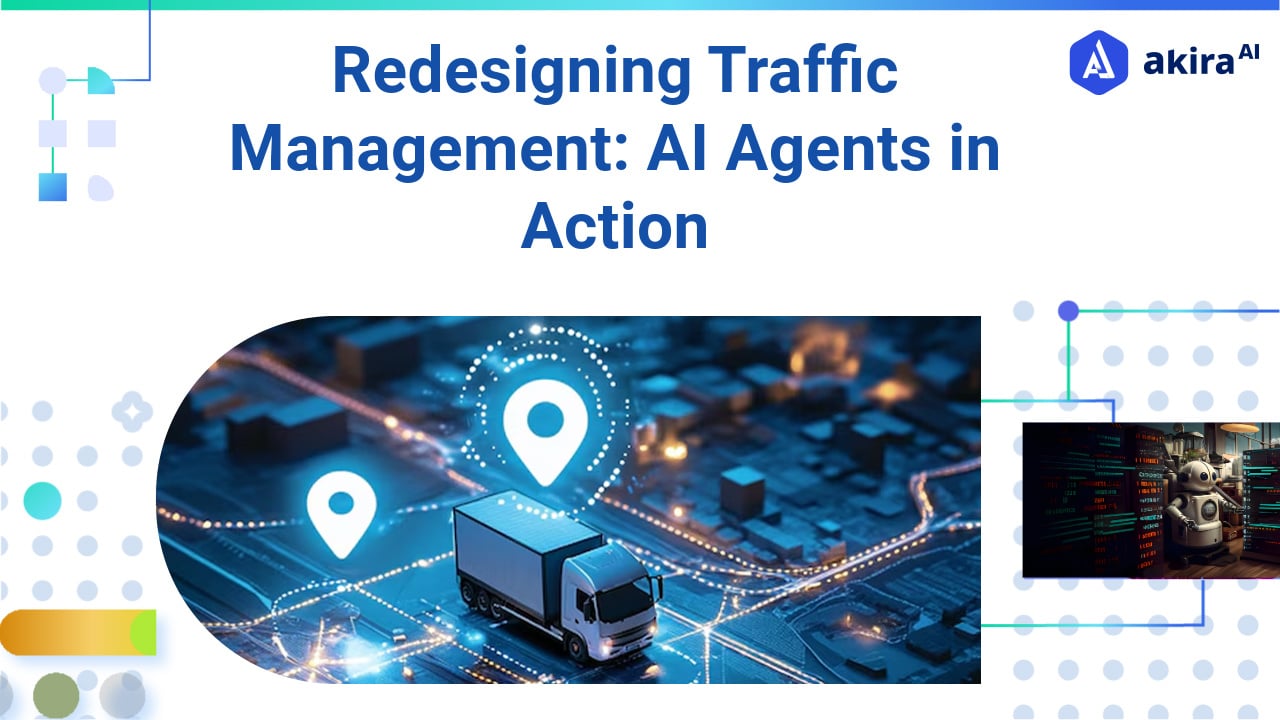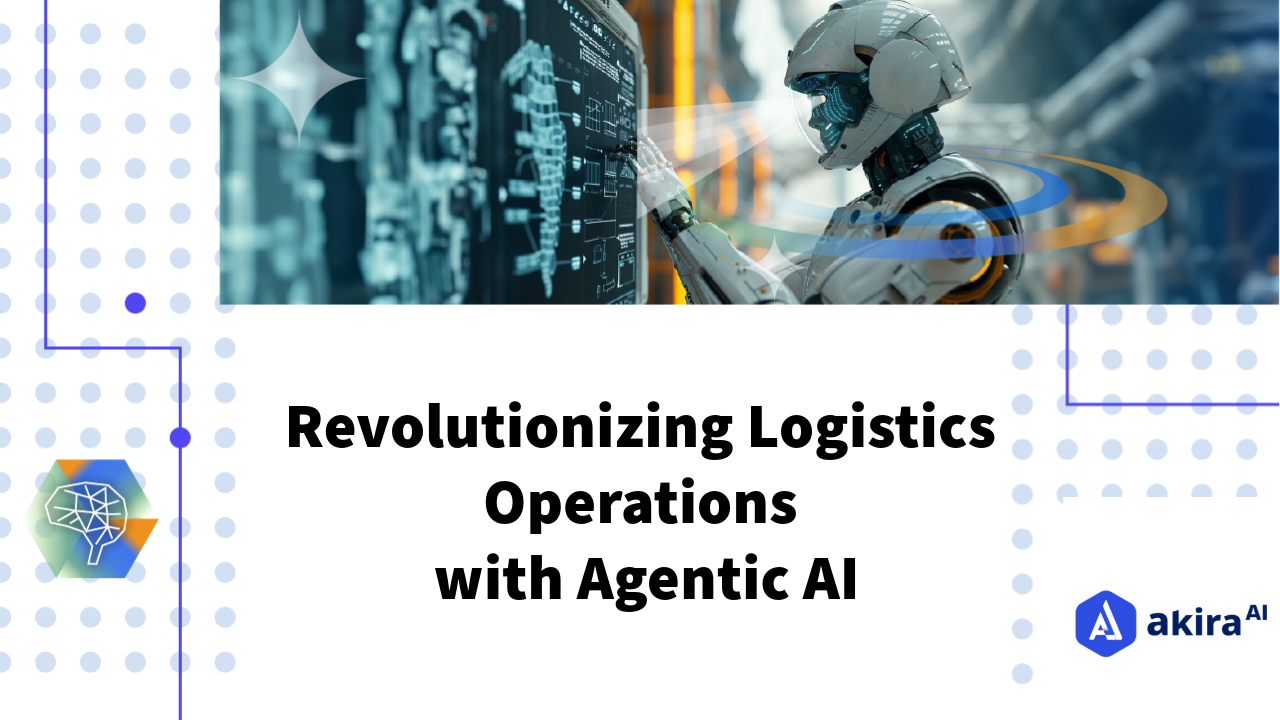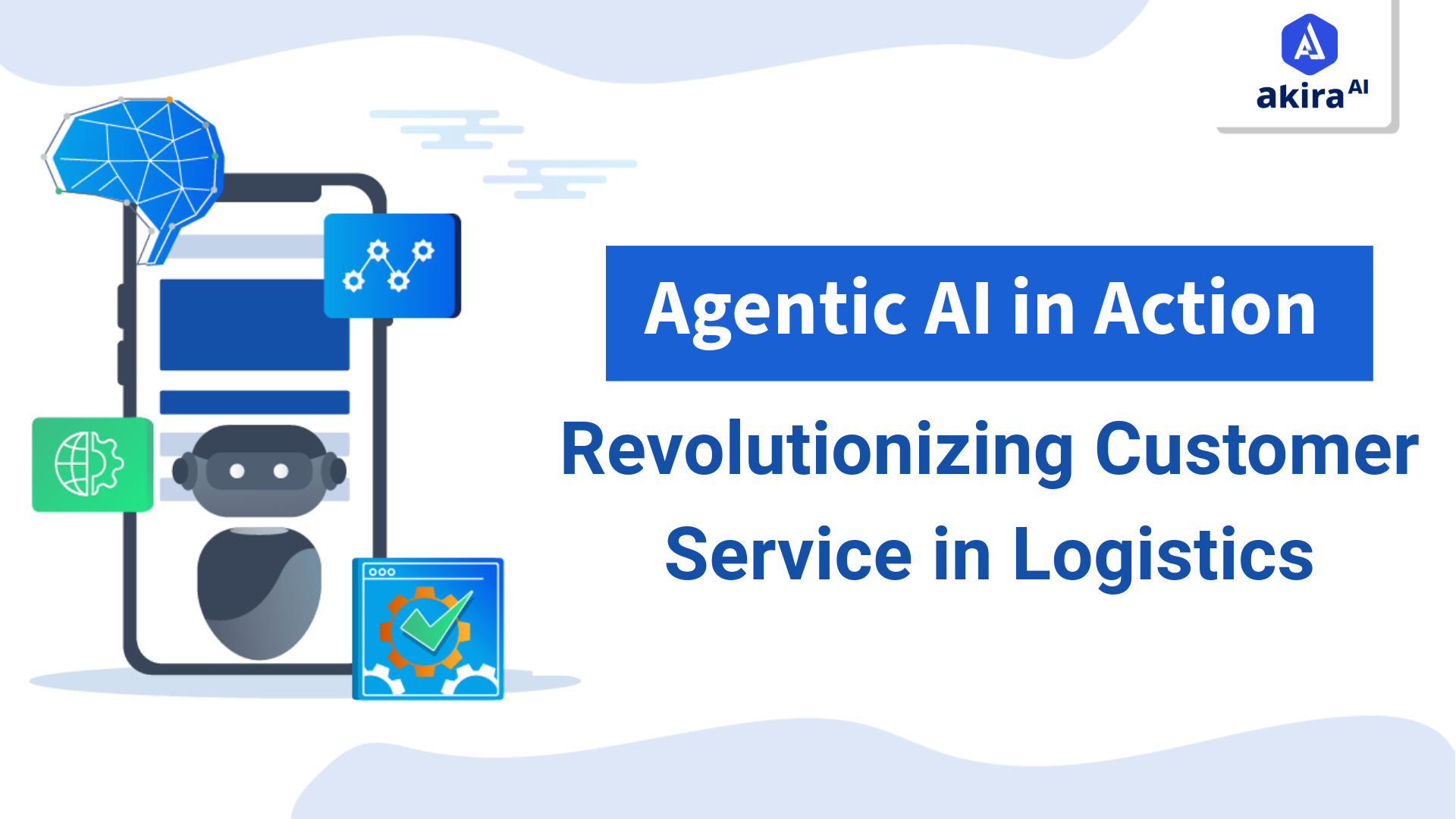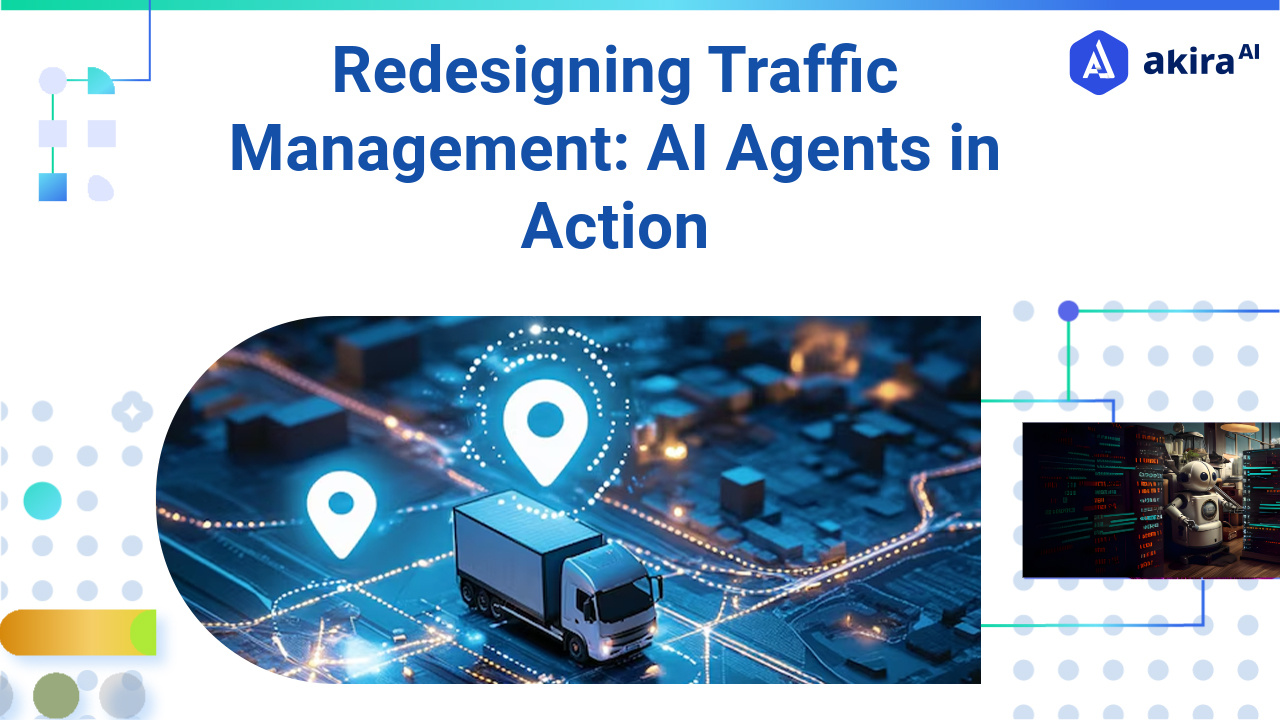Key Insights
Agentic AI is revolutionizing traffic management in logistics by leveraging real-time data analysis to enable proactive decision-making and optimize routes. This approach enhances resource allocation and reduces congestion, leading to timely deliveries and improved operational efficiency. With technologies like machine learning, IoT, and cloud computing, agentic workflows facilitate seamless data integration and communication, ensuring logistics operations can swiftly adapt to changing conditions while enhancing customer satisfaction.

Traffic management plays an important role in improving the functioning of logistics in terms of increasing the availability of capacities and increasing the complexity of supply chains around the world. AI agents’ implementations of these procedures increase effectiveness, productivity, on-time deliveries, and resource management. Real-time traffic updates and intelligent rerouting solutions, given by Agentic AI, function transformationally. This blog is dedicated to how varying solutions with AI Agents use these technologies to improve logistics management, route planning, and even fuel efficiency.
What is Traffic Management?
Traffic management is defined as the techniques that are put in place to regulate the flow of traffic, goods, and services. It involves a threefold process of design, application, and control of traffic movement on roads and highways as well as in logistics systems.
Major areas of traffic management include traffic route determination, traffic congestion reduction, and traffic incident management. By following the above-mentioned principles, one is always able to achieve the objectives of reducing congestion, improving the safety of the transport systems, and increasing the overall effectiveness of the transport processes involved.
This process becomes more important in the supply chain industry, especially in the transportation sector. It guarantees timely delivery and optimum utilization of the available resources in the production process. With the growing complexity of logistics networks, traditional traffic management methods, which often rely on static data and manual intervention, are proving insufficient. Consequently, ideas, specifically those that imply the application of artificial intelligence and machine learning, are changing the decision-making processes and improving business performance.
A Brief Overview of Traffic Management in Logistics
In logistics, traffic management can be defined as a complex process of controlling the movement of traffic for the purpose of goods transportation. It incorporates the creation of the optimal route-, time- and communication plan for the whole supply chain considering the suppliers, logistic providers, and transportation agencies. As a result, traffic management is an important factor when it comes to optimizing logistics costs and delivery time and generating customer satisfaction.
AI agents become essential for contemporary traffic management by analyzing vast amounts of data to provide actionable insights. They always analyze current traffic data received via GPS, traffic cameras, or even from a weather station. It helps logistics managers make the right decisions in a short span of time, thus increasing the reaction time to changing traffic conditions.
Traditional Traffic Management vs. Agentic AI Traffic Management
|
Feature |
Traditional Traffic Management |
Agentic AI-Based Traffic Management |
|
Data Processing |
Manual data entry and analysis |
Real-time data analysis using AI agents |
|
Adaptability |
Limited adaptability to changing conditions |
Dynamic and adaptive to real-time inputs |
|
Efficiency |
Often reactive, leading to delays |
Proactive solutions to avoid delays |
|
Resource Utilization |
Inefficient allocation of resources |
Optimal resource allocation through analytics |
|
User Interaction |
Mostly human-driven decisions |
Automated decision-making with minimal human input |
|
Incident Response |
Slow and often reliant on manual reporting |
Instantaneous alerts and automated rerouting |
|
Scalability |
Challenging to scale with increasing traffic |
Easily scalable with growing logistics demands |
How Do AI Agents Facilitate Traffic Management?
AI agents enhance traffic booking by incorporating other technologies such as agentic analytics and multi-agent systems. These intelligent systems are used in the acquisition, evaluation, and analysis of data originating from various sources in order to present information to the logistics managers.
-
Data Collection: These agents collect data from various sources, including traffic sensors, weather forecasts, and social media updates. This comprehensive data collection allows for a holistic view of the traffic landscape.
-
Real-Time Analysis: Once data is collected, autonomous agents analyze it in real-time. This enables them to identify traffic patterns, detect anomalies, and predict potential disruptions. For instance, if a road closure is reported, the AI can immediately adjust suggested routes.
-
Dynamic Decision-Making: These agents employ the analyzed data in deciding on matters to do with routing, scheduling, and, most importantly, the allocation of resources. They are able to constantly redirect vehicles to a particular location to ensure it does not take a very long time before delivery is made.
-
Enhanced Communication: These intelligent agents improve communication between drivers, dispatchers, and traffic management systems. They can give timely information to drivers and suggest changes that can be made to avoid improved responses to situations.
-
Continuous Learning: Autonomous agents acquire an improved understanding of data and prior experiences. It allows them to continue learning their algorithms and decision-making as they continue making decisions on new data in the future.
How Akira AI Optimizes Traffic Management?
Considering that Akira AI is a complex system involving several AI agents, this is the best solution to the problem of conflicting traffic management in the logistics environment. These agents deploy the scientific method and data analysis in tackling challenges besetting operations with a view of doing away with delays. Some of the key agents are:
-
Predictive Analytics Agents
These agents leverage historical traffic data to forecast congestion levels. By analyzing trends and patterns, they can predict peak traffic times and suggest alternative routes accordingly. This not only enhances efficiency by streamlining route planning but also provides data-driven insights that help identify trends, enabling proactive management of AI in logistics.
-
Routing Optimization Agents
These agents assess in real time which routes are available, where some roads may be closed, and the estimated time taken to get through each route. They advise the best routes to avoid congestion and thereby conserve as much fuel as possible.
Having the freedom to make decisions in real-time enables the logistics managers to act promptly to the changes in the external environment, hence resulting in great benefits in terms of the optimization of fuel and vehicle maintenance costs, which is highly important when it comes to improving the status of AI-powered solutions.
-
Incident Detection Agents
In the case of accidents or roadwork, for instance, these agents track real-time traffic status. They notify logistics managers and drivers so that they can change the route to minimize the delay. This capability enables a constant and flexible smoothing of operations to guarantee deliveries and also keep the satisfaction level of its customers high by addressing unpredicted events that are important in managing traffic in the logistics division.
-
Communication Agents
Facilitating seamless communication, these agents connect logistics teams, drivers, and traffic management systems. They give info on traffic conditions and other changes in the logistics, thereby improving general Field coordination. Thus, effective communication, together with the minimization of miscommunication and error, helps to maintain smooth operations in supply chain management of artificial intelligence automation safely.
-
Feedback Loop Agents
These agents gather user feedback and performance data to give Akira AI the means to improve traffic management constantly. By periodically updating cognizance with feedback, it is possible to adjust the system to existing new conditions or the users’ needs. It also leads to the sustainable development and improvement of services, improves logistics, improves customer relationships, and improves responsiveness in AI for business.
Use Cases of AI Agents in Traffic Management
 Fig1: Use Cases of AI Agents in Traffic Management
Fig1: Use Cases of AI Agents in Traffic Management
AI agents are already being employed in various innovative ways within the logistics sector to enhance traffic management:
-
Dynamic Routing: These agents are helpful to logistics companies for real-time traffic updates that help to redirect vehicle’s movement towards delivery goals that were set, despite some barriers.
-
Predictive Maintenance: Real-time traffic and vehicle performance and benchmarking allow autonomous agents to diagnose the need for car repair and maintenance during their operations for breaking down.
-
Supply Chain Coordination: Such agents help advertise the available suppliers, logistics service providers, and transportation organizations to guarantee the proper movement of goods within the supply chain.
-
Real-Time Monitoring: The AI-powered agents provide timely status of traffic on the roads, establishing means by which logistics managers can correct bad situations and re-strategize.
-
Resource Optimization: The use of data agents enables efficient distribution of resources in logistics companies as the tasks do not waste the time and resources of the companies.
-
Traffic Pattern Analysis: Based on historical traffic data, autonomous agents read patterns that cause flow interference and create mechanisms to reduce the phenomenon, thereby improving traffic in the logistics process.
Operational Benefits of AI Agents in Traffic Management
-
Improved Visibility: These agents provide information analysis and a view of the supply chain circumstance to the logistics managers to help them make a decision.
-
Resource Optimization: The autonomous agents manage resources well, especially regarding the costs of running the operations and enhancing efficiency.
-
Reduced Risk: By enabling proactive decision-making, autonomous agents minimize the risks associated with traffic delays, accidents, and other disruptions.
-
Scalability: AI solutions can be easily integrated into growing logistics operations to meet expanding needs with the same efficiency levels.
-
Enhanced Customer Experience: Organized traffic flow contributes to quicker delivery and better satisfaction of the clients, which in turn satisfies the primary goal.
-
Sustainability Improvements: AI agents are involved in supporting companies in their drive towards sustainability for incurred expenses in routes, which will minimize fuel used in delivery and delivery schedules that are consistent with environmental policies.
Technologies Transforming Traffic Management in Logistics
Several cutting-edge technologies powered by AI agents are revolutionizing traffic management in logistics:
- Machine Learning Algorithms: These algorithms make it possible for these agents to learn the data originating from the past in order to refine their recommendations as well as predictions in the future.
- Natural Language Processing (NLP): NLP helps such agents to learn human language and hence advance communication and therefore user interaction.
- IoT Integration: Integrating these agents with Internet of Things (IoT) devices facilitates real-time data collection and analysis, leading to smarter traffic management solutions.
- Cloud Computing: Cloud-based AI solutions allow for seamless data access and collaboration across logistics teams, enhancing operational efficiency.
- Blockchain Technology: The use of blockchain can improve transparency and security in logistics operations, providing a reliable framework for data sharing and collaboration.
- Geospatial Analysis Tools: These tools enable autonomous agents to analyze geographic data, improving route optimization by considering geographical constraints and road conditions.
Future Trends in AI Agents for Traffic Management
As the logistics industry continues to evolve, several emerging trends are shaping the future of AI agents in traffic management:
-
Increased Automation: There will be increased integration of logistics decisions with automated decision-making systems, and thus the need for human inputs minimized and response time reduced.
-
Enhanced Predictive Capabilities: Advances in machine learning and data analytics will lead to even more accurate predictions and recommendations, further optimizing logistics operations.
-
Greater Integration with Autonomous Vehicles: These agents will play a crucial role in the safe integration of autonomous vehicles into logistics operations, enhancing efficiency and safety.
-
Focus on Sustainability: AI agents will help logistics companies reduce their carbon footprints by optimizing routes and minimizing fuel consumption, contributing to sustainability goals.
-
Advanced Analytics: The development of more sophisticated analytical tools will enable logistics providers to gain deeper insights into their operations and make more informed strategic decisions.
-
Collaborative AI Systems: Future trends may include collaborative AI systems that work across various logistics providers to optimize traffic management on a larger scale, improving inter-company communication and efficiency.
Conclusion: AI Agent for Traffic Management
Akira AI shows that using AI agents positively impacts traffic management systems in logistics. When used to provide real-time traffic data, these quantitative measures give organizations a better level of maneuverability – allowing them to adapt swiftly to traffic changes and events. This responsiveness is a must in today’s world, where a customer’s appetite for deliveries is as urgent as the blink of an eye. As mentioned above, these AI capabilities, once adopted by the logistics providers, make substantial optimization of their operations in addition to enhancing the customer satisfaction level and loyalty.


